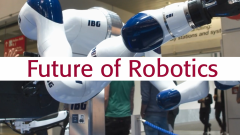
This video program is a part of the Premium package:
Communication Models for Reconfigurable Intelligent Surfaces: From Electromagnetics to Programmable Wireless Environments
- IEEE MemberUS $4.99
- Society MemberUS $0.00
- IEEE Student MemberUS $4.99
- Non-IEEE MemberUS $9.99
Communication Models for Reconfigurable Intelligent Surfaces: From Electromagnetics to Programmable Wireless Environments
A reconfigurable intelligent surface (RIS) is an emerging technology that enables the control of the electromagnetic waves. An RIS is a thin sheet of electromagnetic material, which is made of many nearly passive scattering elements that are controlled through low cost and low power electronic circuits. By appropriately configuring the electronic circuits, different wave transformations can be realized. Recent research works have shown that RISs whose geometric size is sufficiently large can outperform other technologies, e.g., relays, at a reduced hardware and signal processing complexity, and can enhance the reliability of wireless links by reducing the fading severity. In addition, the achievable performance of RIS-assisted systems has been proved to be robust to various hardware impairments, e.g., the phase noise, which may further reduce the implementation cost. To quantify the performance gains offered by RISs in wireless networks, realistic communication models need to be employed. In this talk, we offer a critical appraisal of the communication models currently employed for analyzing the ultimate performance limits and for optimizing RIS-assisted wireless networks. Furthermore, we introduce a new tractable, electromagnetic-compliant, and circuit-based communication model for RIS-assisted transmission and discuss its applications to the modeling and optimization of wireless systems.
 Cart
Cart Create Account
Create Account Sign In
Sign In





